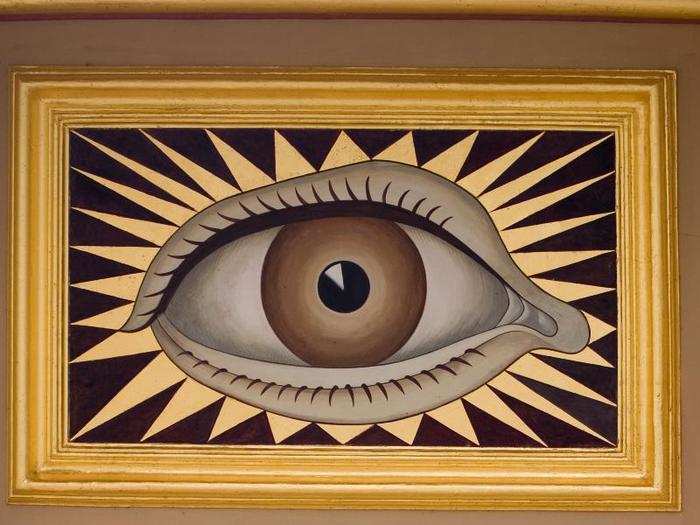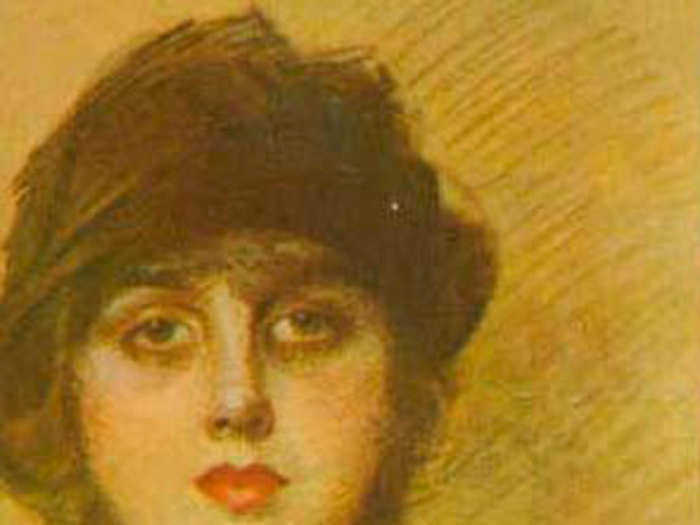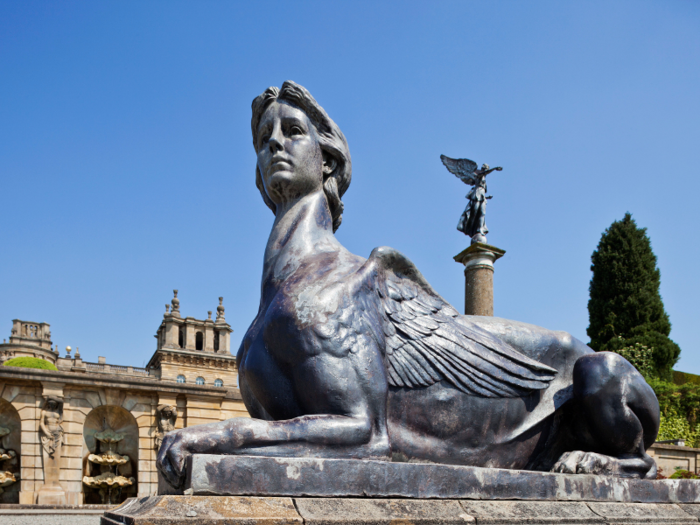- Home
- slideshows
- miscellaneous
- A ceiling in Winston Churchill's ancestral home tells the story of an eccentric duchess
A ceiling in Winston Churchill's ancestral home tells the story of an eccentric duchess
Blenheim Palace, United Kingdom

While the palace is known for its tapestries, old master paintings, antiques and furniture, the North Portico tells the story of one of the building's more eccentric inhabitants.

The decoration of the portico dates to 1928 and the patronage of Gladys Deacon, the second wife of the 9th Duke of Marlborough, who commissioned British war artist Colin Gill to paint the eyes of her and her husband in 1928. The duchess allegedly scaled Gill's ladder waving a silk scarf so that he might perfect the exact shade of her famously disarming eyes. Having studied at London's lade School of Fine Art, Gill was dispatched to the Western Fronting France during the First World War, where he employed his artistic training working as a camouflage officer. On his return, he was commissioned to paint a contemporary history painting commemorating the dead for a memorial project known as the Hall of Remembrance, a commemorative building that was never completed. His observations of trench warfare can be seen in the work Heavy Artillery (1919) in the Imperial War Museum, London.
Celebrated for her meteoric beauty and famed for her intellect and wit, the duchess beguiled Europe, capturing the admiration of Marcel Proust, Auguste Rodin (who gifted her a sculpture), Claude Monet, and the Crown Prince of Prussia, among many others. Born in Paris to American parents, she spent most of her early years in France, including an education in a convent to which she was sent after her father murdered her mother's lover.
Deacon arrived in England in the late 1890s and befriended the Duke of Marlborough's first wife Consuelo.

Unsurprisingly, she acted as muse for a number of modernist artists who captured her in portrait form. They included Italian futurist artist Giovanni Boldini, John Singer Sargent, and the sculptor Jacob Epstein. Soon after her arrival in England, Deacon became the Duke of Marlborough's mistress ensconced at Blenheim, although the pair did not marry until 1921 when his first marriage ended. The second duchess was committed to her pursuit of a perfectly formed Grecian profile, and soon after her marriage she underwent cosmetic surgery to inject paraffin wax into the bridge of her nose. However, the wax became displaced and collected in hard lumps around her chin, disfiguring her famous beauty.
Gill's painting of eyes may be something of a window onto a troubled soul who lived a life of colorful experiences, but any intended meaning remains oblique and lies buried with the enigmatic duchess, who died a nocturnal recluse, surrounded by cats.

Having said this, the eye as a visual symbol has a significant history and has appeared on churches, temples and even on banknotes. For example, the Eye of Horus was a popular motif in ancient Egyptian mythology and represented good health, protection, and royal power. In Europe in the medieval period the eye symbol was often surrounded by a triangle that symbolized the Holy Trinity of Father, Son and Holy Spirit and represented the omniscient eye of God keeping watch on humanity, and was later taken up by the Freemasons as a reflection of their belief in this all-seeing power who saw and judged everything.
Excerpt from THE ART OF LOOKING UP by Catherine McCormack. Copyright © 2019 by Catherine McCormack. Reprinted by permission of White Lion Publishing.
Popular Right Now
Popular Keywords
Advertisement